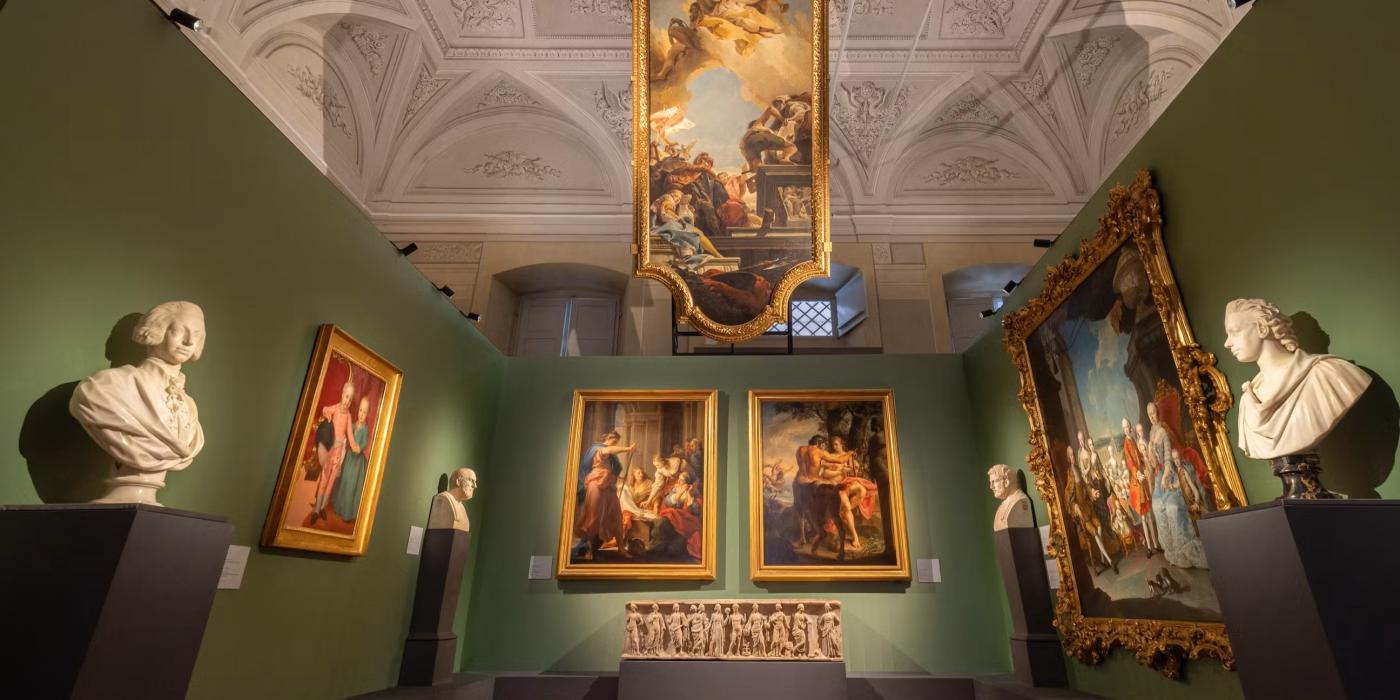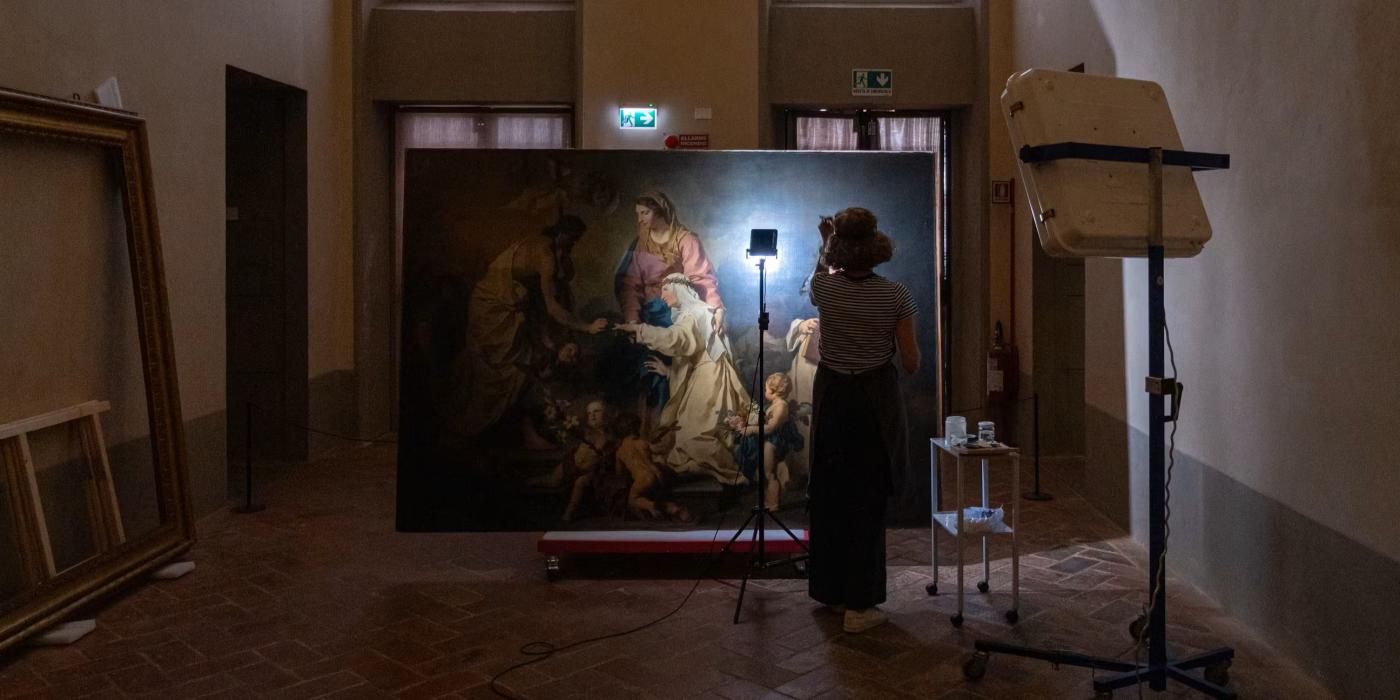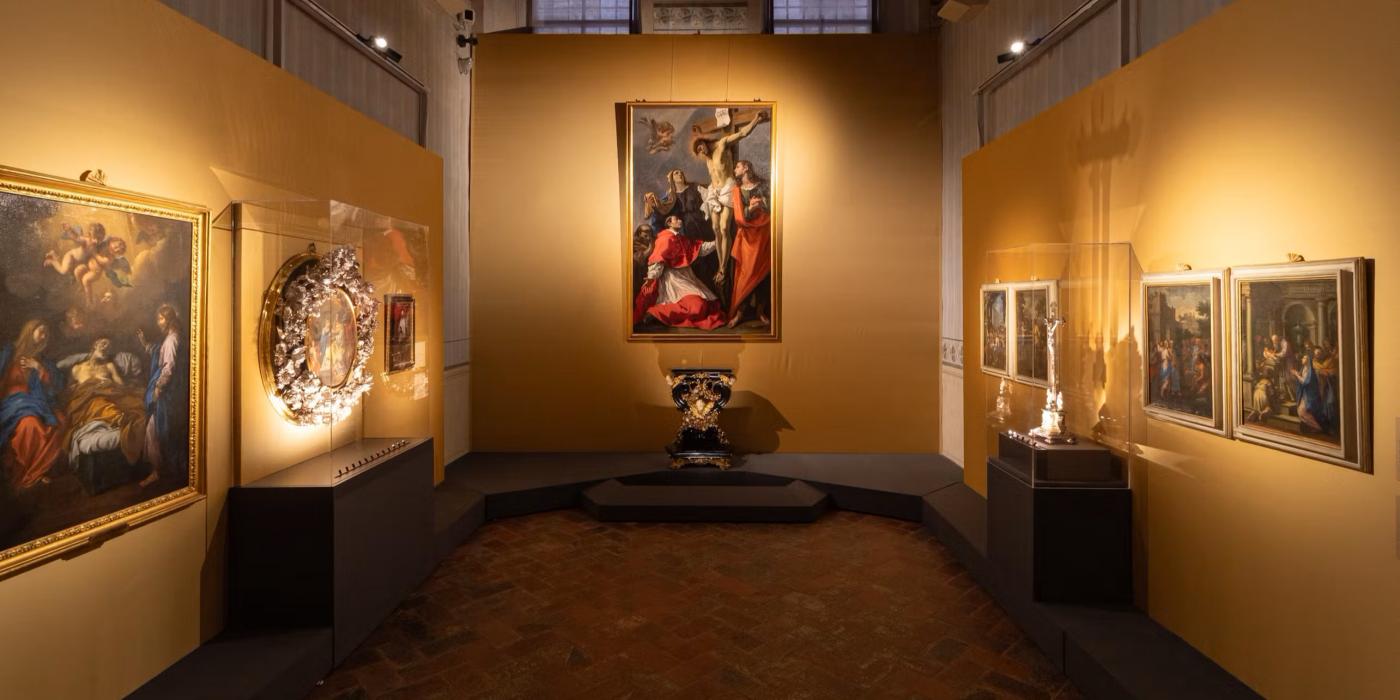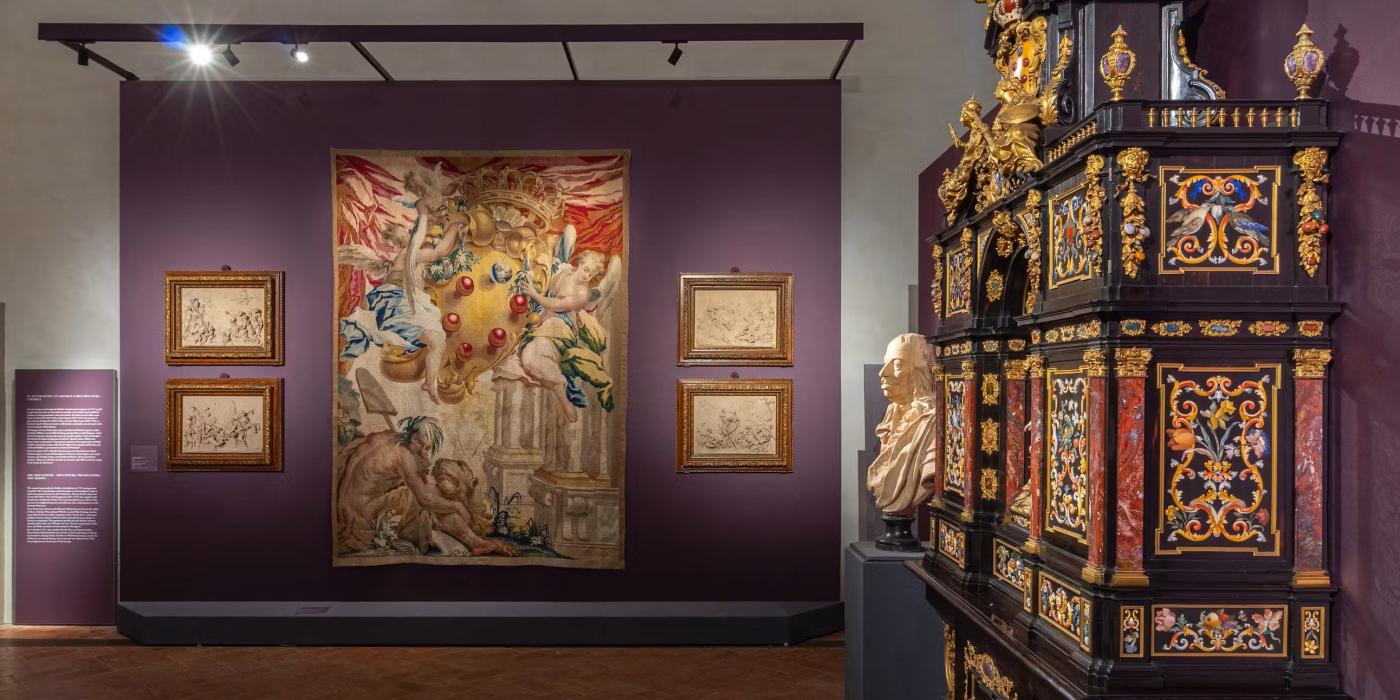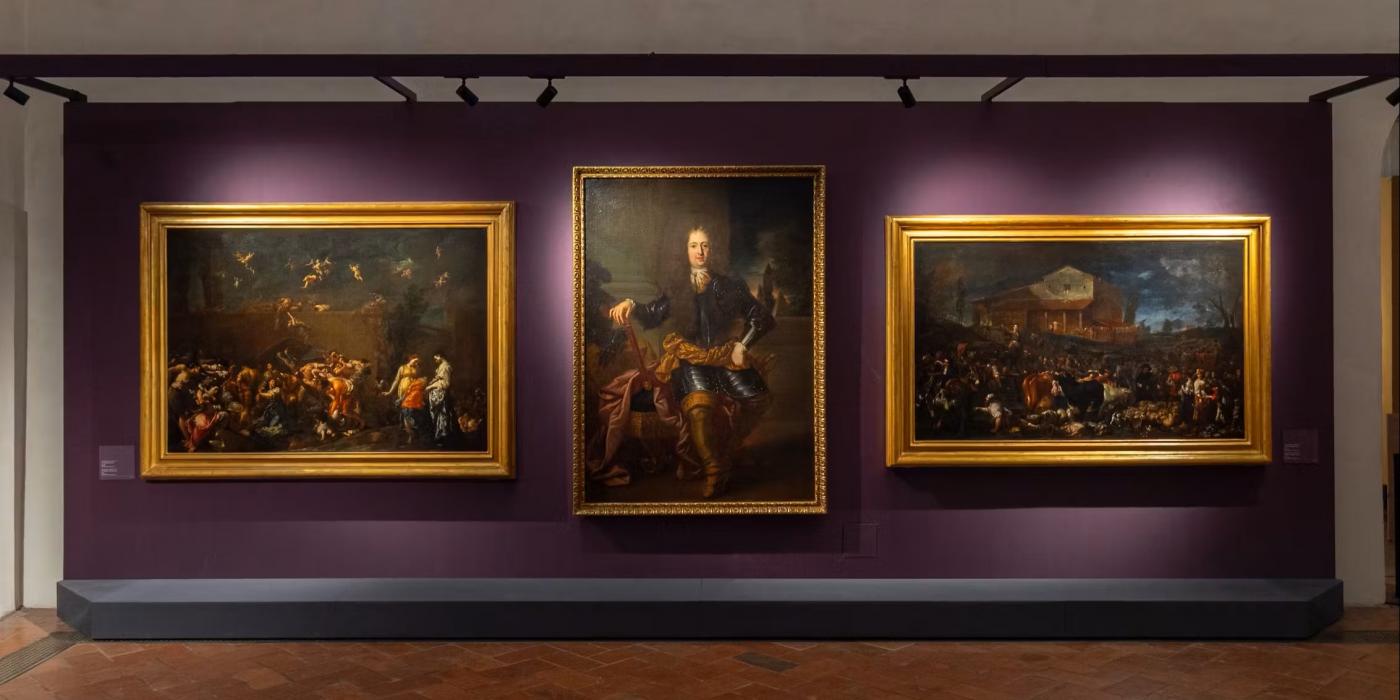Florence and Europe. Arts of the Eighteenth Century at the Uffizi
The exhibition is dedicated to the 18th Century, the 'Age of Enlightenment' and of reforms, which is narrated through some 150 works set up in the ground floor rooms of the Gallery, with masterpieces by Goya, Tiepolo, Canaletto, Vigée Le Brun, Liotard, and Mengs: many never seen before, others hidden for over a decade due to the work to extend the exhibition route.
The aim of the exhibition is to recount, through art, an era of crucial changes for Western thought, aesthetics, and taste, and also for the Uffizi itself, which, in the 18th century, was completely transformed from a dynastic treasure chest of royal collections into a modern museum, the first in the world.
The exhibition begins with artistic production during the time of the last Medici, in the first decades of the 18th century. It was a period in which religion still played a predominant role in society, which was still feudal in nature. Here, then, are their successors, the Lorraines, immortalised in marble busts so that their effigies populate the public places of the city. This is the time when a sensibility influenced by the Enlightenment begins to assert itself: indeed, portraits of a less 'official' nature also appear. They testify to the expansion of the audience of models and patrons that occurred precisely in this century, with a focus on artistic inquiry increasingly based on the depiction of the real rather than the ideal or formal.
Among the aspects of the culture of the time that the exhibition documents is the rediscovery of the Primitives, the painters of medieval Christianity re-evaluated in anti-Enlightenment circles preparing for Romanticism, the authors of gold bases who had been completely removed from modern taste. Just like the growing fashion for the exotic, as well as Chinese porcelain and other curiosities from travellers that have arrived in the museum over the years.
A major novelty is the 'live' restoration of the Mystic Marriage of Saint Catherine de' Ricci by Pierre Subleyras, a recent acquisition by the Uffizi Galleries. The great painting, considered a masterpiece of the 18th century, needs a thorough cleaning so that its delicate colours can once again shine as they once did, and it will be 'treated' live under the very eyes of the exhibition public.
The exhibition then gives ample space to nude and erotic-themed sculptures, an artistic category that experienced great fortune during the 18th century. The selection on display, in particular, echoes the composition of the imagined erotic cabinet that the Marquis de Sade described towards the end of the 18th century in his novel 'Juliette'.
As visitors advance through the exhibition to the latter half of the century, they encounter a room dedicated to the emerging aesthetic category of the Sublime: beauty is 'transcended' by feelings of awe and dismay, depicted here in iconographies of snow-capped peaks, ruins, and waterfalls. The exhibition concludes with a series of souvenirs and works related to the Grand Tour, including two views of Venice by Canaletto and a spectacular view of Vesuvius in Eruption by Thomas Patch.
The aim of the exhibition is to recount, through art, an era of crucial changes for Western thought, aesthetics, and taste, and also for the Uffizi itself, which, in the 18th century, was completely transformed from a dynastic treasure chest of royal collections into a modern museum, the first in the world.
The exhibition begins with artistic production during the time of the last Medici, in the first decades of the 18th century. It was a period in which religion still played a predominant role in society, which was still feudal in nature. Here, then, are their successors, the Lorraines, immortalised in marble busts so that their effigies populate the public places of the city. This is the time when a sensibility influenced by the Enlightenment begins to assert itself: indeed, portraits of a less 'official' nature also appear. They testify to the expansion of the audience of models and patrons that occurred precisely in this century, with a focus on artistic inquiry increasingly based on the depiction of the real rather than the ideal or formal.
Among the aspects of the culture of the time that the exhibition documents is the rediscovery of the Primitives, the painters of medieval Christianity re-evaluated in anti-Enlightenment circles preparing for Romanticism, the authors of gold bases who had been completely removed from modern taste. Just like the growing fashion for the exotic, as well as Chinese porcelain and other curiosities from travellers that have arrived in the museum over the years.
A major novelty is the 'live' restoration of the Mystic Marriage of Saint Catherine de' Ricci by Pierre Subleyras, a recent acquisition by the Uffizi Galleries. The great painting, considered a masterpiece of the 18th century, needs a thorough cleaning so that its delicate colours can once again shine as they once did, and it will be 'treated' live under the very eyes of the exhibition public.
The exhibition then gives ample space to nude and erotic-themed sculptures, an artistic category that experienced great fortune during the 18th century. The selection on display, in particular, echoes the composition of the imagined erotic cabinet that the Marquis de Sade described towards the end of the 18th century in his novel 'Juliette'.
As visitors advance through the exhibition to the latter half of the century, they encounter a room dedicated to the emerging aesthetic category of the Sublime: beauty is 'transcended' by feelings of awe and dismay, depicted here in iconographies of snow-capped peaks, ruins, and waterfalls. The exhibition concludes with a series of souvenirs and works related to the Grand Tour, including two views of Venice by Canaletto and a spectacular view of Vesuvius in Eruption by Thomas Patch.
Notas de acceso:
Información sobre la reserva de la entrada de la Galería de los Uffizi: FAQ reserva para la a Galería Uffizi
Última entrada una hora antes del cierre.
Entrada gratuita el primer domingo del mes, 25 de abril, 4 de noviembre; acceso prioritario suspendido.
Photo gallery

